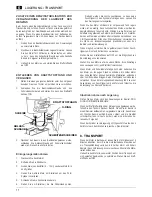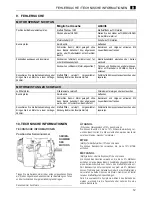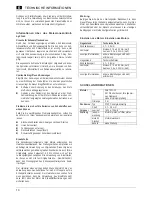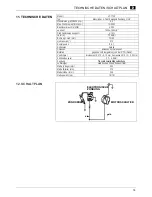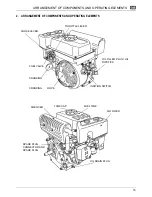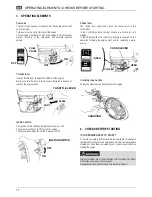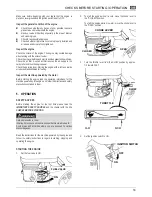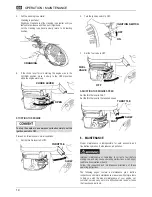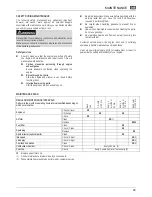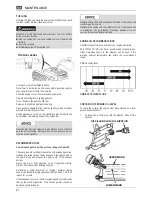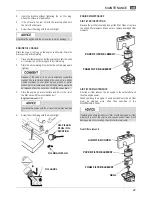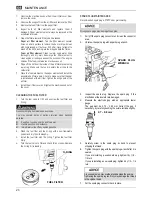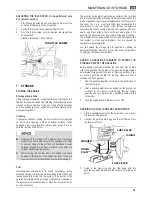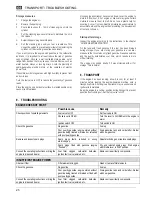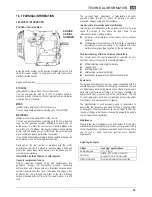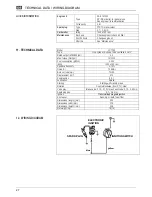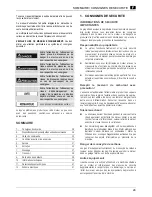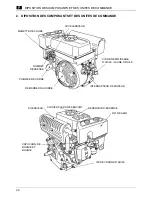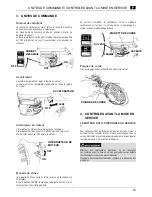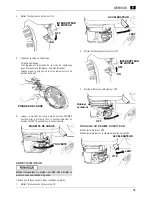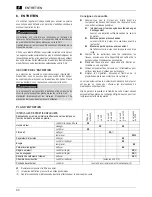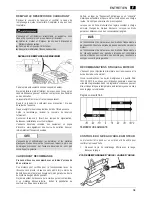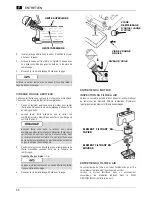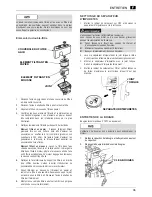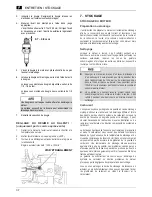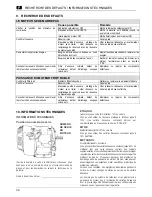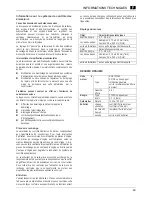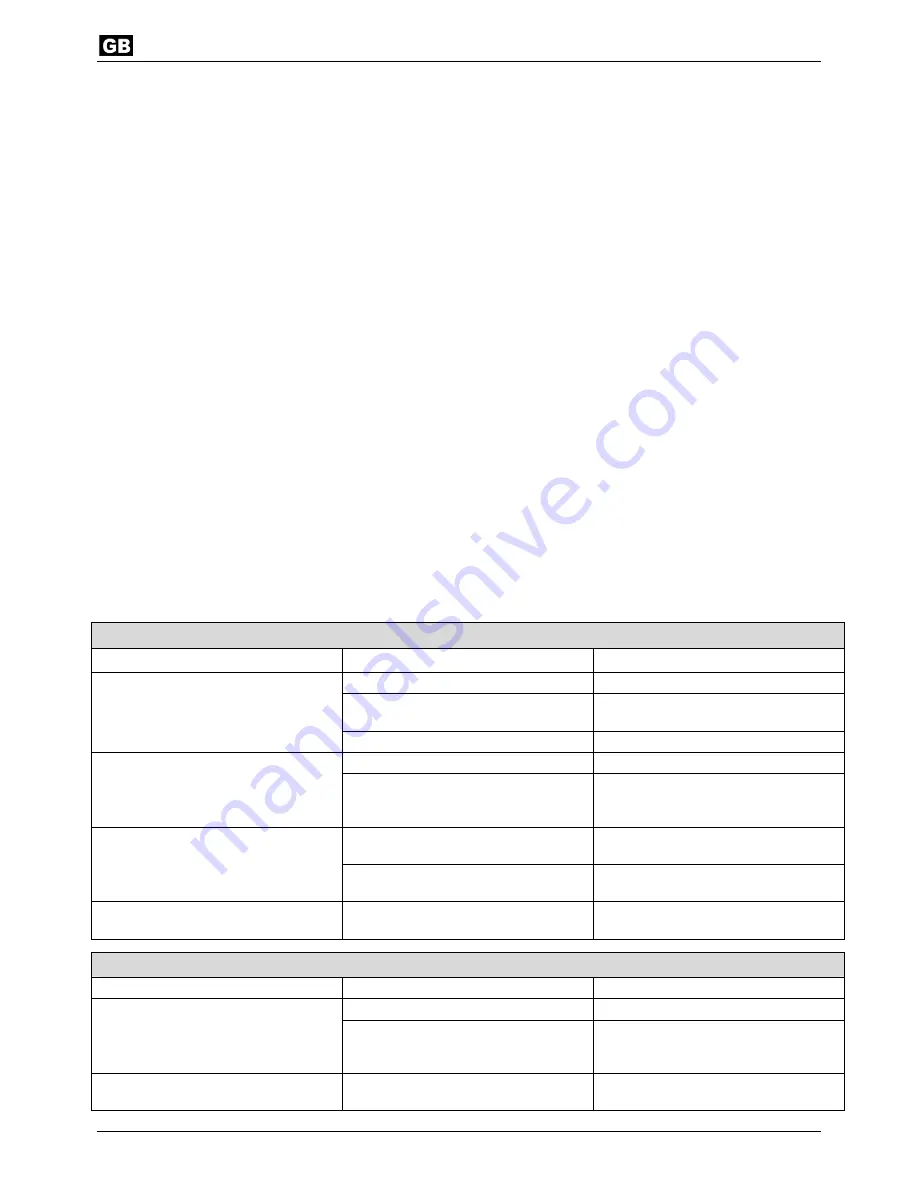
TRANSPORT / TROUBLESHOOTING
25
Storage measures
1.
Change the engine oil.
2.
Remove the spark plug.
3.
Pour a table spoon (5 - 10 ml) of clean engine oil into the
cylinder.
4.
Pull the cranking rope several times to distribute the oil in
the cylinder.
5.
Screw the spark plug back into place.
6.
Pull the cranking rope until you feel a resistance. This
closes the valves to prevent any moisture from entering the
cylinder. Let the cranking rope slide back slowly.
If you want to store the engine with gasoline in the carburettor
and tank, it is important to at least reduce the risk of gasoline
vapour ignition. Choose a well ventilated storage area out of
range from devices that may cause or contain flames, such as
water heaters, stoves or laundry driers. Avoid the proximity of
spark-generating electric motors or the operation of electric
power tools.
If possible, avoid storage areas with high humidity to prevent rust
and corrosion.
Turn the fuel valve to OFF to reduce the possibility of gasoline
leaks.
Place the engine on a horizontal surface. A slanted position may
cause oil and fuel leaks.
Once engine and silencer have cooled down, cover the engine to
protect it from dust. A hot engine or silencer may ignite certain
materials or cause them to melt. Do not use a plastic tarp for
covering. A cover from non-breathing material causes moisture to
accumulate around the engine thus promoting the development
of rust and corrosion.
Startup after storage
Inspect the engine according to the instructions in the chapter
”CHECKS BEFORE STARTING”
Fill the tank with fresh gasoline if the fuel has been drained
during storage. If you are storing your gasoline in a canister,
make sure that it contains only fresh gasoline. Gasoline oxidizes
and the quality deteriorates over time, which results in more
difficult starting.
The engine may smoke briefly if it was protected with oil for
storage. This is normal.
8.
TRANSPORT
If the engine has been running, allow it to cool for at least 5
minutes before loading the engine-powered machine onto a
transport vehicle. A hot engine and silencer may cause burns and
ignite certain materials.
Keep the engine in a vertical position during transport to prevent
gasoline from running out. Set the fuel valve to OFF.
9.
TROUBLESHOOTING
ENGINE DOES NOT START
Possible cause
Remedy
Check position of operating elements
Fuel valve to OFF
Set fuel valve to ON
Choke lever to OPEN
Turn the lever to CLOSED until the engine is
warm.
Ignition switch OFF
Turn switch to ON
Check the gasoline
No gasoline
Fuel up
Poor quality gasoline; engine stored without
gasoline being treated or drained or refuelled
with poor quality gasoline
Drain gasoline tank and carburettor. Refuel
with new gasoline.
Remove and inspect spark plugs
Spark plugs faulty, corroded or wrong
electrode gap.
Adjust electrode gap or replace spark plugs.
Spark plugs filled with gasoline (engine
“flooded”)
Dry and reinstall spark plugs. Start engine
with throttle lever in FAST position.
Consult the operating instructions or bring the
engine to a licensed dealer.
Fuel filter clogged, carburettor defective,
ignition fault, valve jammed, etc.
Replace or repair faulty components.
INSUFFICIENT ENGINE POWER
Check air filter.
Filter elements clogged.
Clean or replace filter elements.
Check the gasoline
No gasoline
Fuel up
Poor quality gasoline; engine stored without
gasoline being treated or drained or filled with
poor quality gasoline.
Drain gasoline tank and carburettor. Refuel
with new gasoline.
Consult the operating instructions or bring the
engine to a licensed dealer.
Fuel filter clogged, carburettor defective,
ignition fault, valve jammed, etc.
Replace or repair faulty components.
Содержание GHB 760 A
Страница 110: ... NOTIZEN ...
Страница 111: ......

